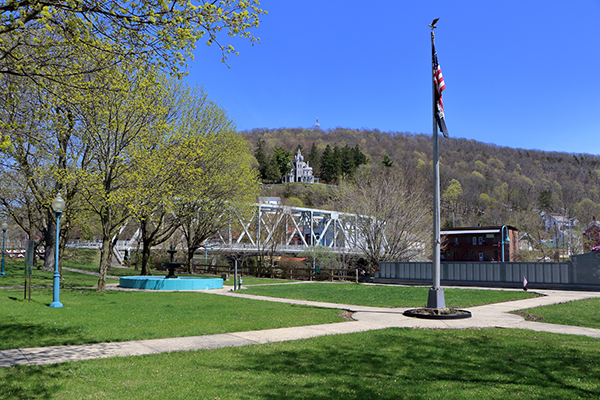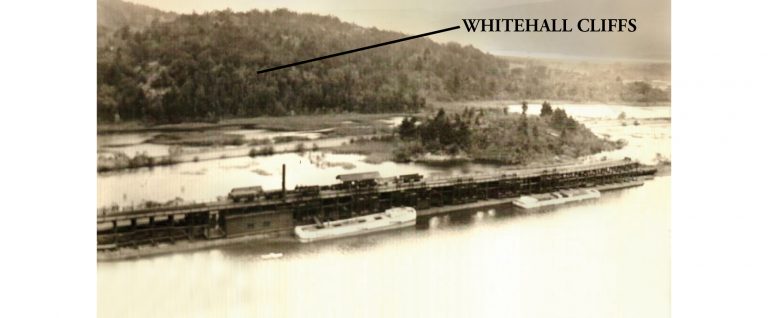The year is 1866. You are traveling from New York City to Burlington to experience the fresh air, clean water, and wild shoreline of Lake Champlain. After riding the train up the Hudson Valley to Whitehall, you reach the end of the line—a two-story wooden dock where your 262-foot long sidewheel steamship is waiting to take you and your fellow passengers to points north on the Lake. The lake is narrow here, bordered by sheer cliffs. As the steamship thunders to life and moves slowly away from the dock, you look back upon a rugged mountain rising from the marsh—Whitehall Cliffs.
Located at the southern end of Lake Champlain, Whitehall has always been a strategic transportation hub. In the early 1800’s, travelers would arrive via overland carriage and board small steamships headed north on the Lake. Completion of a rail line from Saratoga Springs, NY in 1848, ushered in the heyday of “rail-to-steamship” travel in the region. This long and scenic journey was lauded by many, including renowned Adirondack photographer Seneca Ray Stoddard, who in 1874, described Lake Champlain as “a great highway of commerce and pleasure travel.”
In the early days, steamships leaving Whitehall had to “warp” around a treacherous curve in the original channel known as “The Elbow.” Here, a rope thrown to a waiting deckhand was often needed to help guide these large ships around the rocks safely. Today, one can imagine the tug operators and harbor workers wrangling a 200-foot steamship through this rocky passageway.
As the boats grew larger, a rail line was extended one mile north from the village to a dock bordering what is now Whitehall Cliffs Natural Area. At this dock, as succinctly put by Seneca Ray Stoddard in his 1874 guidebook, “passengers and freight [were] transferred from rail to steamboat and vice versa.” In 1874, the rail line was extended north to Ticonderoga, ending the steamship’s reign as the preferred means of travel up and down the Champlain Valley.
Thanks to our generous supporters, a key piece of the historic landscape of Whitehall has been saved for future generations to enjoy and imagine a time when luxurious steamships plied the waters of Lake Champlain.
A Brief History of Whitehall, New York
 The village and surrounding mountains of Whitehall are steeped in history. Founded in 1759 by Philip Skene, Whitehall’s location at the southern end of Lake Champlain and two major land routes leading south and east made it a strategic location in the French and Indian War, the American Revolution, and the War of 1812.
The village and surrounding mountains of Whitehall are steeped in history. Founded in 1759 by Philip Skene, Whitehall’s location at the southern end of Lake Champlain and two major land routes leading south and east made it a strategic location in the French and Indian War, the American Revolution, and the War of 1812.
An important shipbuilding center, Whitehall is considered the birthplace of the U.S. Navy, as the boats used by Benedict Arnold in the first naval battle of the Revolutionary War at Valcour Island were built here. The village is also home to the final lock on the historic Champlain Canal.
Today, visitors can tour historic buildings, view monuments and memorials, and a walk along the Canal. Whitehall is also home to two museums open during the summer months—the Skenesborough Museum and Skene Manor, a restored Victorian mansion overlooking the village.



